From the bustling floors of industrial facilities to the pristine corridors of office buildings, autonomous mobile robots (AMRs) have become indispensable in revolutionizing various industries and these cutting-edge robots continue to transform the landscape of automation. In this blog post, we will explore the fascinating origins and industrial applications of autonomous mobile robots, shedding light on their evolution from the 1950s to their pivotal role in modern industrial processes. Furthermore, we will delve into the specific challenges when robot comes to navigating through multi-floor buildings, highlighting methods required to overcome these obstacles. Whether you're a technology enthusiast, or an industry professional, this post will provide valuable insights into the remarkable capabilities and ongoing developments of autonomous mobile robots in the cleaning industry.
Introduction
Autonomous mobile robots (AMRs) have a rich history and are widely utilized in various industrial applications. The evolution of AMRs can be traced back to the 1950s, with the development of the first industrial robot by George Devol, which was the world's first mechanical arm and used for tasks such as heavy lifting and assembly line work. This innovation marked the birth of industrial robots, bringing revolutionary changes to automated production and manufacturing industries.
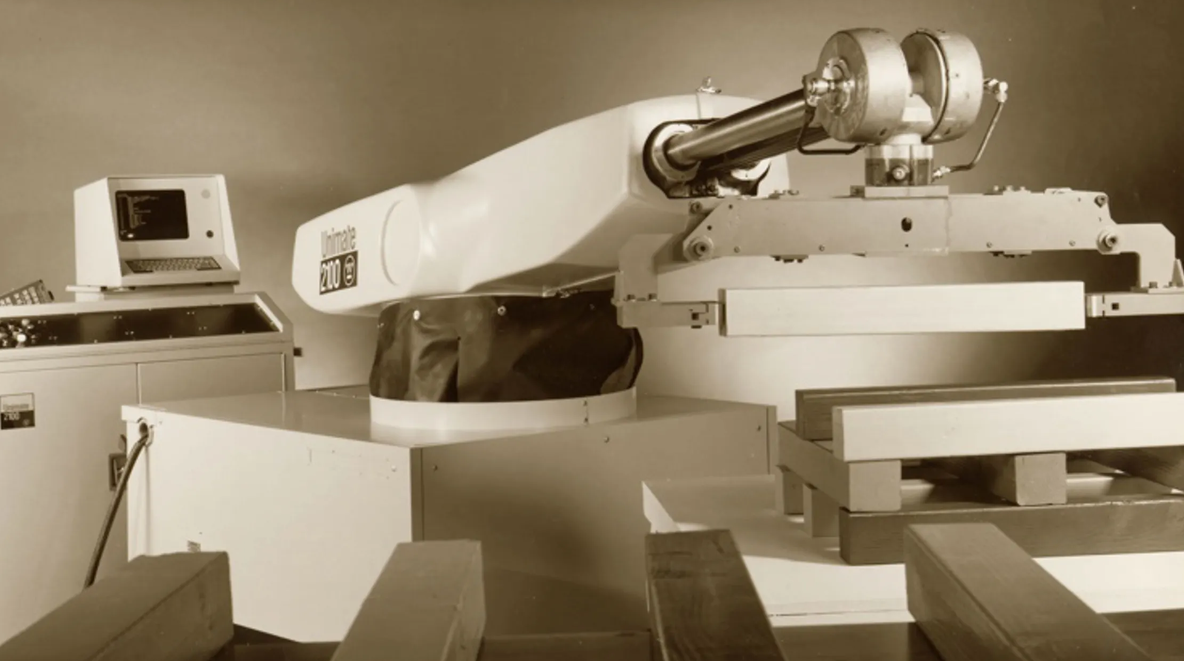 ( Source: George Devol: A Life Devoted to Invention, and Robots | IEEE
)
( Source: George Devol: A Life Devoted to Invention, and Robots | IEEE
)
Although early robots were primitive, they significantly improved productivity. By the 1980s, the reduction in computer hardware costs propelled robot technology into a qualitative leap. Engineers began installing sensors and lasers on robots, these devices acting like human eyes and ears, enabling robots to perceive objects like humans and perform precise and complex tasks such as painting and welding. This technological advancement made robots play an increasingly important role in manufacturing and other fields.
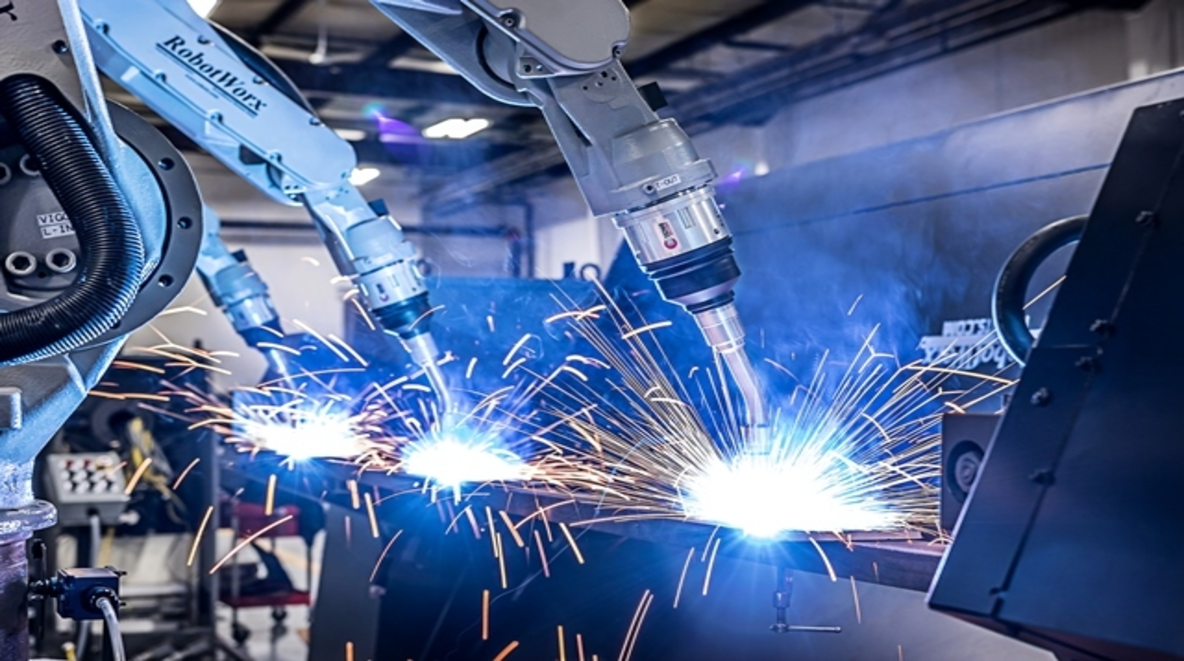 ( Source: Focusing the weld with Plasma Welding | Robots.com | T.I.E. Industrial
)
( Source: Focusing the weld with Plasma Welding | Robots.com | T.I.E. Industrial
)
While current Autonomous Mobile Robots (AMRs) can transport goods from one workstation to another, they are like toddlers with underdeveloped legs, lacking flexibility and adaptability. Therefore, in the late 20th century, researchers began studying truly autonomous mobile robots. With the advancement of artificial intelligence, sensors, and machine learning technologies, autonomous mobile robots can focus more on perceiving their surroundings and learning from experience, adapting to changes through algorithms. This progress has made AMRs more intelligent and flexible, bringing about more efficient and intelligent automation solutions for modern industrial and logistics sectors.
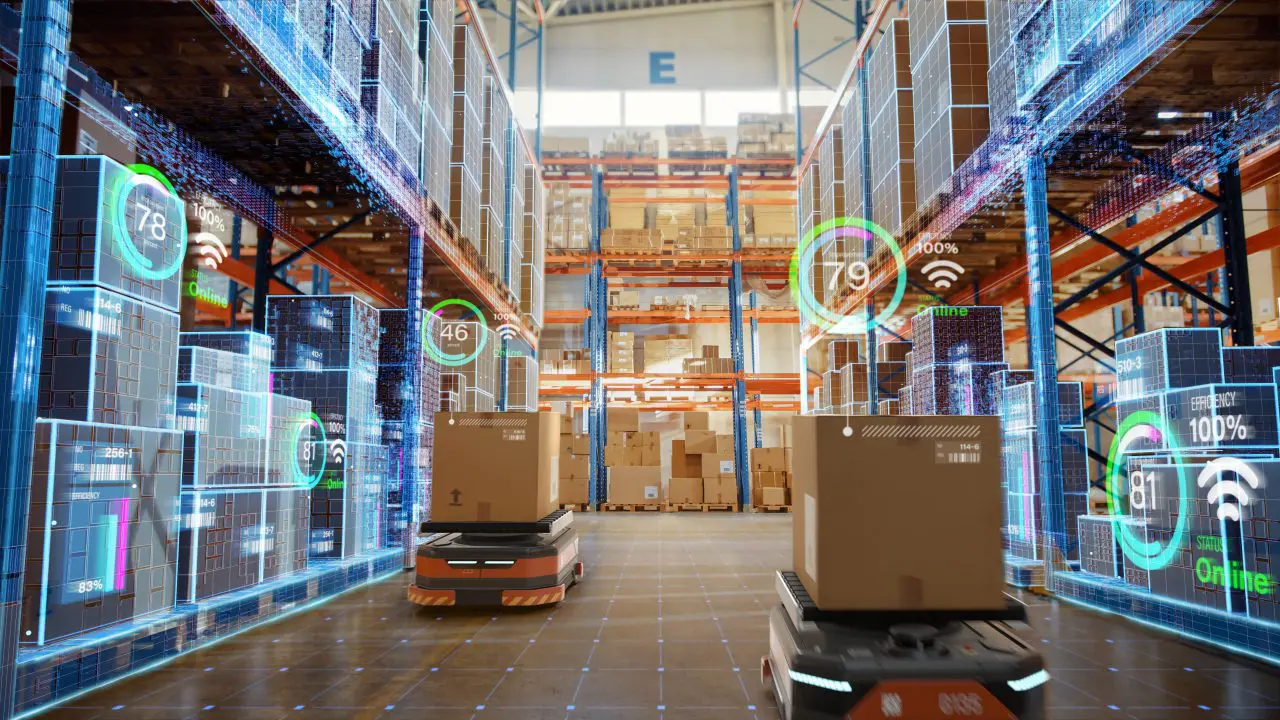
In the early 21st century, AMRs were widely used across various industries globally, including manufacturing, retail, and healthcare. While robots have streamlined warehouse operations, most still work alongside a human workforce. In this context, robot autonomous elevator-taking technology emerged.
Why Do Cleaning Robots Need to Take Elevators?
Autonomous cleaning robots face challenges in taking the elevator due to the complexity of navigating through multi-floor buildings. Unlike traditional cleaning tasks that are confined to a single level, autonomous cleaning robots need to be able to access various floors efficiently. This presents a challenge as they must have features, including calling, riding, positioning, and floor recognition. Otherwise, robots will still be unable to get rid of the dependence on manual labor when performing cross-floor cleaning tasks.
Challenges and Solutions
Traditionally, robots have struggled to navigate elevators independently due to technical constraints and compatibility issues with elevator systems. However, advancements in both software and hardware have paved the way for innovative solutions. Software-based approaches leverage open APIs (Application Programming Interfaces) and seamless integration with elevator control systems.
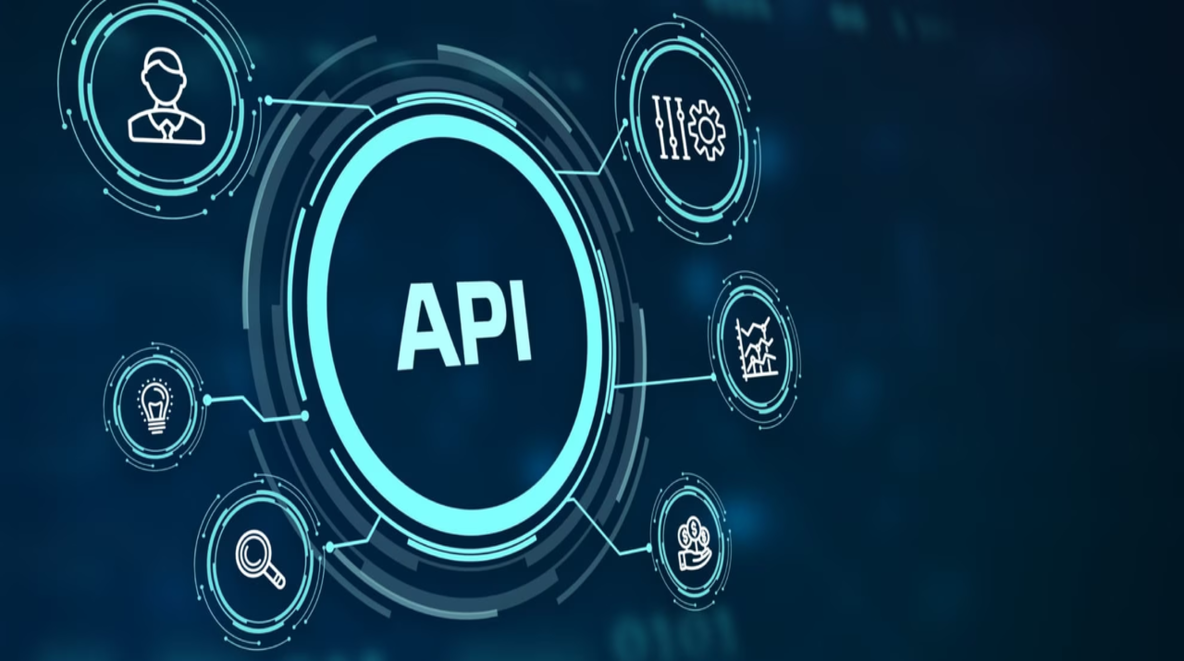 (
Source: What Is An API And How Does It Work? | HP® Tech Takes
)
(
Source: What Is An API And How Does It Work? | HP® Tech Takes
)
On the other hand, adding hardware using elevator control devices with WiFi, Bluetooth, or 4G/LORA to achieve independent elevator access.
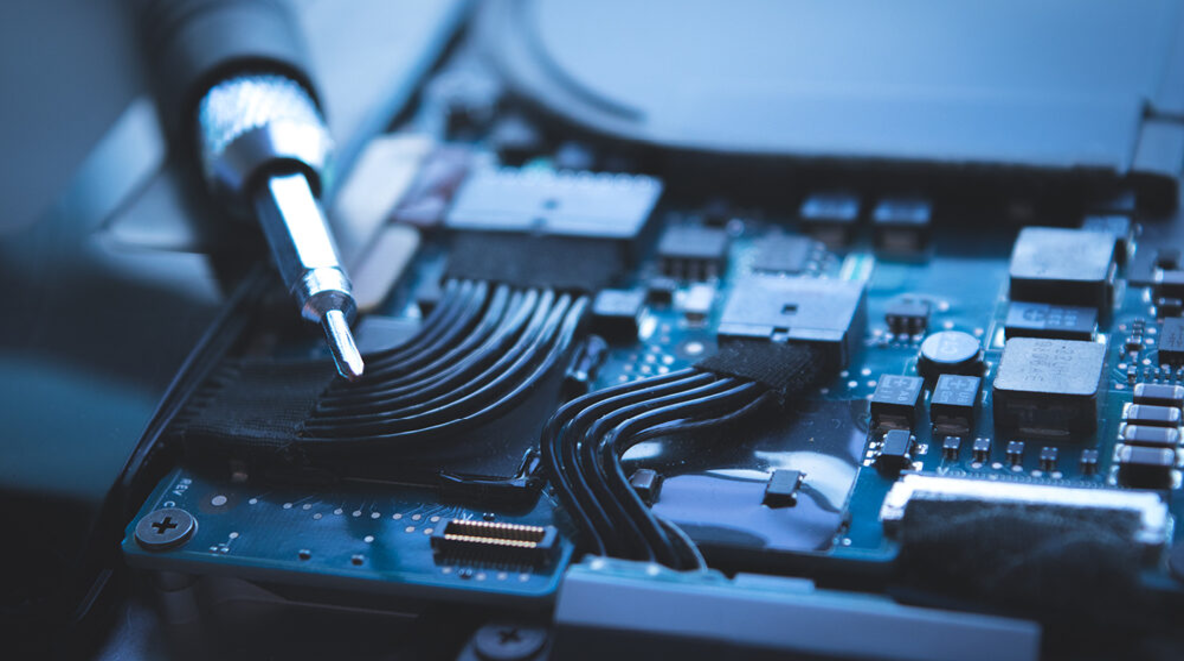 (
Source: Career Spotlight: Computer Hardware Engineer | Excelsior University
)
(
Source: Career Spotlight: Computer Hardware Engineer | Excelsior University
)
Software offers greater reusability among elevators of the same brand and model, allowing installation periods to be shortened to less than a day. Additionally, the installation process does not require elevator shutdowns or hardware purchases, resulting in minimal demand for maintenance personnel and significantly reducing deployment costs. Moreover, remote guidance for software debugging is less challenging, enhancing the potential for international expansion. However, software debugging methods have certain limitations when it comes to older elevators.
On the contrary, the method of adding hardware is still applicable in older elevator systems or when elevator manufacturers do not support networking and open API interfaces. However, the installation period varies from 3 to 5 days, during which the elevator is out of service.
Overall, software integration combines flexibility, convenience, and cost-effectiveness, while hardware integration offers an alternative solution, has limitations in these aspects.
Progress in Elevator Technology
Leading elevator manufacturers, such as Schindler and Thyssenkrupp, are driving innovation in elevator interface technology to facilitate multi-level robot movement within buildings. These advancements not only enhance elevator accessibility for robots but also improve user experience.
Thyssenkrupp Elevator North America has launched a robotics interface platform to assist with robot delivery services throughout buildings. Kevin Lavallee, CEO of Thyssenkrupp expressed that thyssenkrupp Elevator is shaping future smart cities with innovative technologies and solutions for safer, more efficient passenger movement, including robots.
Schindler introduces the Built-In Robot Service Connection, which integrates an API to establish a communication link between robots and elevators.
KONE and Gaussian have jointly launched the world's first digital elevator series, the DX Elevator. According to official information, the DX Elevator does not require additional installation of a lift control system and can achieve interaction between robots and elevators without the need to modify elevator lines and structures.

Otis Elevator Company realeased Otis Integrated Dispatch (OID) technology, which is an API, intended to work with any brand or model of robot capable of using APIs. Manager, Engineering, Otis Korea, said, “Otis ensures that robots and elevators use a common protocol, which means they can be easily integrated.”
KT Corp, LG Electronics Inc. and Hyundai Elevator Co carried out elevator-robot linkage cooperation. KT and LG Electronics said a far more competitive system of robotics services is possible by linking an elevator to a robot since robots must freely move between floors to increase their utility.

These advancements point towards a future where robots that can navigate elevators will be the norm and not the exception.
Why Sveabot is the Smart Choice
Among the plethora of cleaning robots, Sveabot intelligent elevator solution stands out for its exceptional adaptability, high-quality service, and outstanding product advantages.
Sveabots intelligent elevator control system is compatible with all elevator manufacturers that have open APIs. Once a quote is approved, Sveabot's skilled engineers complete deployment within a mere 48 hours. This rapid deployment minimizes disruption and swiftly enhances the operational efficiency of your building. Sveabot robots are not just about functionality; they're designed with safety and interaction at their core. Here's how they stand out:
- Interactive Alerts: Through sound and light signals, Sveabot robots gently remind passersby of their presence, ensuring safety in shared spaces.
- Advanced Navigation: Equipped with TOF sensors, laser and ultrasonic radars, and depth vision cameras, these robots skillfully navigate around obstacles, making every operation smooth and efficient.
- Cliff Detection: High-rise tasks come with their risks, but with bottom cliff detection sensors, Sveabot robots confidently work on upper floors, eliminating the fear of falls.
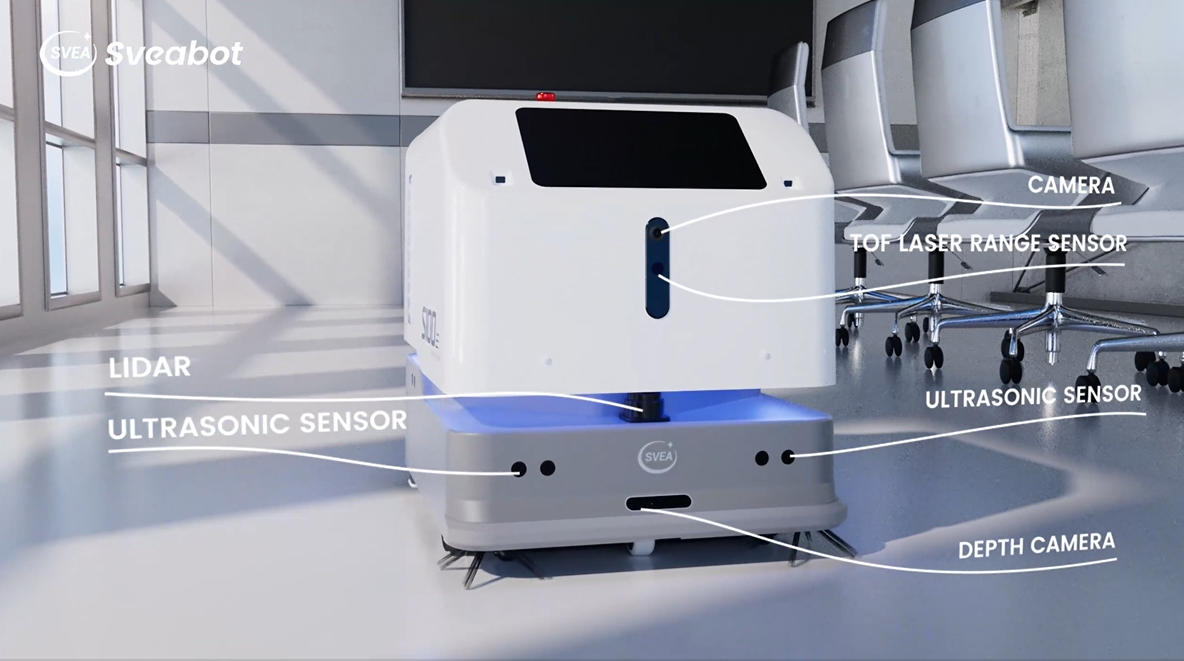
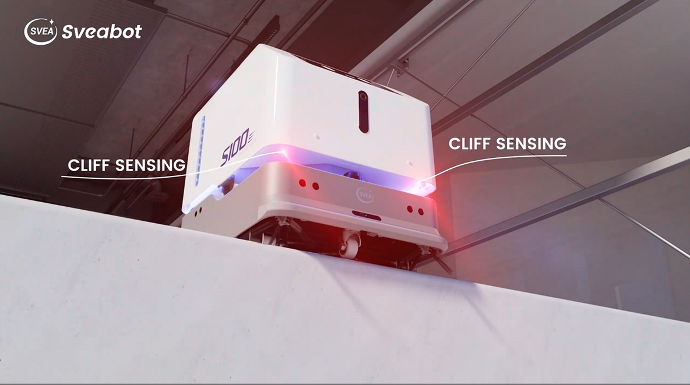
- Self-Sufficiency: With the ability to monitor their battery life, return for charging, and resume tasks where they left off, these robots drastically reduce the need for human intervention.
Ultimately, the Sveabot intelligent elevator control system is designed with coexistence in mind, ensuring that humans and robots can share elevator spaces safely.
Hailing Elevators with Robots
Hailing an elevator involves a series of steps that robots must follow to call and operate the elevator autonomously:
- Requesting Elevator Access: Using the elevator's open APIs, the robot sends a command to call the elevator to its current location.
- Awaiting Elevator Arrival: The robot determines whether the elevator has arrived through real-time monitoring of the elevator status and position from the elevator control system.
- Boarding the Elevator: Once the elevator arrives, the robot sends a command to open the door and enters the elevator cabin.
- Selecting Destination Floor: Based on its cleaning or service route, the robot selects the desired destination floor and close the door .
- Operating the Elevator: After initiating the ride, the robot evaluates whether the elevator has arrived by the elevator control system.
- Exiting the Elevator: Upon reaching the destination floor, the robot exits the elevator cabin and continues its cleaning in the designated area.
Case Study: Elevating Cleaning Operations in Hong Kong
In a recent case in Hong Kong, Sveabot showcased its prowess in elevator-accessible robots. With just two staff members, the team successfully deployed the S100 cleaning robot in a single day. The S100 can independently call the elevator from the ground floor, travel up to the 12th floor for cleaning tasks, and then return seamlessly to the starting point. The efficiency and effectiveness of this process left a lasting impression on the customer, highlighting how autonomous elevator-riding robots like the S100 can revolutionize and streamline cleaning operations across different levels of a building.
With enhanced mobility, compatibility, and efficiency, these robots redefine the standards of modern building maintenance. To learn more about how the Sveabot series cleaning robots can keep your facilities spotless without much handholding, click here.
Citations:
https://techhq.com/2023/11/evolution-of-autonomous-robots-past-present-and-future-roles/